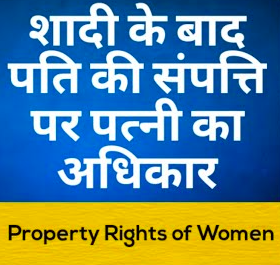Can Wife Claim Husband Property After Divorce in India?
Introduction
Divorce is the name for the formal dissolution of a marriage, which can take place in court. Both partners find going through the divorce procedure draining and unpleasant. The labor is made more challenging by legal arrangements like alimony, maintenance, and property.
A couple may have a solid financial foundation throughout their marriage, but things may change drastically following divorce. To handle one of the most troubling issues, they must comprehend and be aware of the laws and procedures to determine who receives what portion of the property.
In addition to the legal right to receive rent, keep one’s pay, enter into contracts, and bring legal action, property rights include the right to acquire, possess, sell, and transfer property. Women’s rights to property after divorce is one of the most sensitive topics. To divide the marital estate in a divorce, a woman’s claim to her husband’s property depends on several variables, including how and why the couple split up.
The wife’s property rights follow the divorce if her husband owns the property.
If the property is held in the husband’s name, the wife has no legal rights to it in the case of an amicable divorce. The property belongs to the person whose name has been registered, as stated by the Registration Act of 1908 (RA).
When it comes to the bank, it belongs to the person in whose name the loan has been given and who is responsible for paying the loan installments. Even if the woman did not make a financial contribution to the home’s construction, the husband has no right to demand that she vacate the property until and until a reputable court has granted them a legally binding divorce.
She has the right to remain in the home until an appropriate authority declares their marriage null and void. After the divorce, the woman has the right to demand support and financial support for herself and her children, but she is not permitted to ask for the property.
As an illustration: After marriage, the husband purchases an apartment for himself and his wife, registered in his name. The couple cohabitated in an apartment when they were married. However, if a divorce is involved, the husband will continue to be the sole owner of the apartment, and the wife will forfeit all rights to it.
In a slightly different scenario, the woman could not claim the flat if it had been jointly purchased by the husband and wife but registered in the husband’s name. However, using bank records and other documents, she can prove that she contributed money to the property purchase.
Property rights of a woman in a joint property following divorce
There are several reasons why a couple buys joint property, including tax benefits, simple savings opportunities, or situations where both partners contribute to the house’s acquisition. In cases where the property is listed as joint property, the woman can pursue a claim to a portion of it in the event of a divorce.
The court has the discretion to award her a share as part of the divorce settlement based on the sum and proportion of the contribution. She must provide proof of her contributions to purchase property in her husband’s name, according to her property rights. She can offer the account statements to enforce her rights.
A home is deemed to be owned jointly if a couple purchases it. The lady has the right to live in the home as long as the divorce is legal and the property division is finalized by the Hindu Succession Act of 1956, which she is a co-owner of.
In the case of Satish Ahuja v. Sneha Ahuja (2020), a Supreme Court bench of three judges also established this. In this instance, the woman’s father-in-law filed a lawsuit seeking an order compelling the woman to leave the house immediately. He argued that neither his son nor his daughter-in-law were the rightful owners of the property. In this case, the court decided that the woman had the right to live there regardless of her husband’s ownership interest in the property.
The procedure of settling each party’s share of the property with the party that wants to keep it might be started by either the wife or the husband. It can be done before or after the divorce, and they are also responsible for paying the portion based on the current state of the market.
After a divorce, a wife’s property rights in terms of her movable property
According to the Transfer of Property Act (1882), all types of property—aside from immovable property—are called mobile property.
Stridhan
These are the assets that the lady is given at the moment of marriage, according to the Smritikars. Jewelry, money, and other things might be among them. Following the divorce, the wife also has a claim to these properties. However, if the husband helped pay for these presents, he has the right to recoup his investment in case of a divorce.
Any property that the women acquired due to the division would not be Stridhan but rather the women’s estate, according to the Allahabad High Court’s ruling in the case of Debi Mangal Prasad Singh v. Mahadeo Prasad Singh.
The Hindu Succession Act of 1956 determined that the joint property gained by partition was an absolute property or Stridhan, as stated in Section 14 of the Act. Because she owns something, a woman has complete control over how it is alienated. She may do whatever she wants with it, including give, sell, lease, trade, mortgage, and other actions.
The Privy Council ruled in the case of Bhagwandeen Doobey v. Maya Baee (1869) that the possessions handed to the wife by the husband would not fall under the purview of Stridhan but would instead be referred to as the women’s estate.
What constitutes Stridhan has now been determined by the Supreme Court in the matter of Pratibha Rani v. Suraj Kumar and Others (1985) –
- Gifts were exchanged before the wedding fire.
- Gifts that were given at the wedding.
- Gifts given to her as tokens of love by her mother-in-law or father-in-law on the occasion of her marriage
- Gifts are given to women by their mothers, fathers, and brothers.


